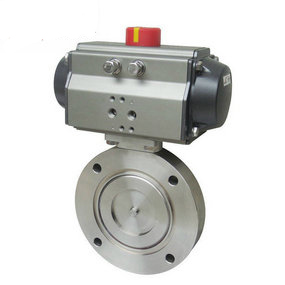What to do if the pneumatic dust butterfly valve fails? Failure cause analysis and countermeasures of high-temperature pneumatic ball valve for coking; high-temperature pneumatic ball valve is generally used at a temperature of about 500 ℃. Metal hard sealing is also used to prevent leakage caused by uneven pressure on the valve seat due to instability of the bellows, so steam is injected into the inner and outer cavities of the bellows for purging. Widely used in domestic delayed coking units with high temperature on coke tower bottom residual oil pipeline and tower top oil steam pipeline. The high-temperature pneumatic ball valve has broken through the limit of the use temperature of the soft seal pneumatic ball valve, and its structure is more complex. Its manufacturing process and parts selection are also more sophisticated. The problems of the pneumatic ball valve during the operation of the coking unit should be timely checked online and properly handled. Correct inspection and use methods are particularly important.

Unique valve seat sealing structure: the floating ball valve adopts the lip type elastic seal ring structure design to ensure the reliability of sealing. For low pressure, ultra-low pressure or vacuum; The positive ball valve adopts a leaf spring loaded valve seat sealing structure, which can ensure the long-term and reliable sealing of the ball valve. The valve seat material of medium and high temperature ball valves can be polystyrene or metal.




